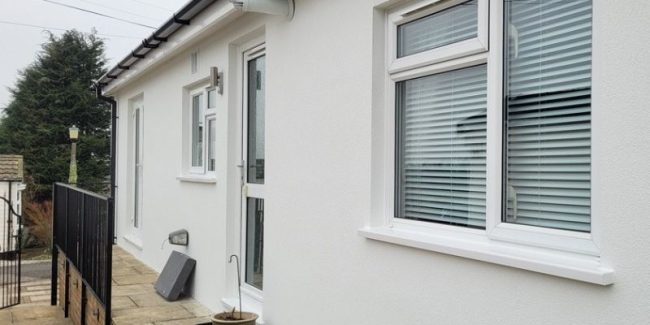With energy costs continuing to rise, homeowners across Ireland are searching for ways to improve their property’s energy efficiency and reduce heating bills. One of the most effective and long-lasting solutions is external wall insulation. But a common question many ask is: How much does external insulation cost in Ireland?
This comprehensive guide explains costs, key factors that influence pricing, available grants, and why investing in external insulation can be a smart long-term decision.
What is External Wall Insulation?
External wall insulation is a process where an insulating layer is fixed to the exterior of your home and then covered with a protective render or cladding. This creates a thermal barrier, preventing heat loss and improving energy efficiency.
Unlike internal insulation, which reduces room space, external insulation maintains indoor dimensions and can give your home a fresh, modern appearance.
Average Cost of External Insulation in Ireland
The price of external insulation varies depending on several factors such as property size, material choice, and labour rates. On average:
- Small Homes / Apartments: €6,000 – €9,000
- Semi-Detached / Medium Homes: €10,000 – €15,000
- Large or Detached Homes: €16,000 – €25,000+
These figures generally include the cost of materials, labour, and finishing. However, prices may be higher if significant wall repairs, decorative finishes, or premium materials are required.
Factors That Influence External Insulation Cost

1. Property Size and Complexity
Larger homes or houses with multiple stories, intricate designs, or architectural features (e.g., bay windows) will require more materials and labour, which increases overall costs.
2. Insulation Material
The type of insulation material plays a big role in determining cost. Common options include:
- Expanded Polystyrene (EPS): Affordable and widely used.
- Mineral Wool: Offers better fire resistance and soundproofing, slightly costlier than EPS.
- Phenolic Foam: High-performance insulation with a premium price tag due to superior thermal efficiency.
3. Condition of the Walls
If the external walls have cracks, dampness, or structural issues, these must be fixed before applying insulation, adding extra costs to the project.
4. Type of Finish
The final coating—render, paint, or decorative cladding—affects the price. Standard finishes are more budget-friendly, while premium designs cost more.
5. Labour and Contractor Expertise
Experienced, SEAI-registered contractors may charge higher rates, but they ensure quality workmanship and help homeowners qualify for government grants.
SEAI Grants – Reducing the Cost of External Insulation
The Sustainable Energy Authority of Ireland (SEAI) provides grants to help homeowners cover the cost of insulation upgrades. For external wall insulation, the available grants are:
- Apartment or Mid-Terrace House: Up to €3,000
- Semi-Detached or End-of-Terrace House: Up to €4,500
- Detached House: Up to €6,000
These grants can significantly reduce upfront expenses, making the investment more affordable while increasing the energy efficiency of your home.
Why External Wall Insulation is Worth the Cost
1. Significant Energy Savings
External insulation reduces heat loss, meaning less energy is needed to keep your home warm. Many homeowners report savings of up to 20–30% on annual heating costs.
2. Improved Home Comfort
Insulation eliminates draughts and cold spots, providing a consistently comfortable temperature throughout the house.
3. A Fresh Look for Your Home
Adding insulation also improves your home’s appearance, giving it a modern, clean finish.
4. Increased Property Value
Energy-efficient homes often sell faster and at higher prices, making this upgrade a smart investment.
5. Long-Term Environmental Benefits
Reduced energy consumption lowers your carbon footprint, contributing to Ireland’s climate action goals.
Cost vs. Long-Term Benefits

While the initial cost may seem high, external insulation offers long-term benefits that far outweigh the investment. Lower heating bills, SEAI grants, and increased property value make it a cost-effective solution.
Additionally, high-quality insulation can last for 25–30 years or more, meaning you enjoy benefits for decades with minimal maintenance.
Conclusion
So, how much does external insulation cost in Ireland? While prices vary based on property size, materials, and labour, most homeowners spend between €6,000 and €25,000. However, when you factor in SEAI grants, long-term energy savings, improved comfort, and enhanced property value, it becomes clear that external insulation is a worthwhile investment for Irish homeowners.
FAQs
- How long does external insulation last?
Properly installed insulation can last 25–30 years or longer with basic maintenance. - Do I need planning permission for external insulation?
Usually, no. However, if your home is a protected structure or the work changes its appearance significantly, permission may be required. - Can I get external insulation for an older property?
Yes. Many older Irish homes benefit greatly from external insulation, though some may need wall repairs before installation. - How much can I save on heating bills?
Savings vary but can reach up to 30% annually, depending on your property’s existing insulation levels. - What is the best insulation material for Irish homes?
EPS is popular for affordability, while mineral wool and phenolic foam provide higher thermal performance and fire resistance. - Why choose an SEAI-registered contractor?
Only SEAI-registered installers can secure grants for homeowners, and they meet high standards for quality and safety

